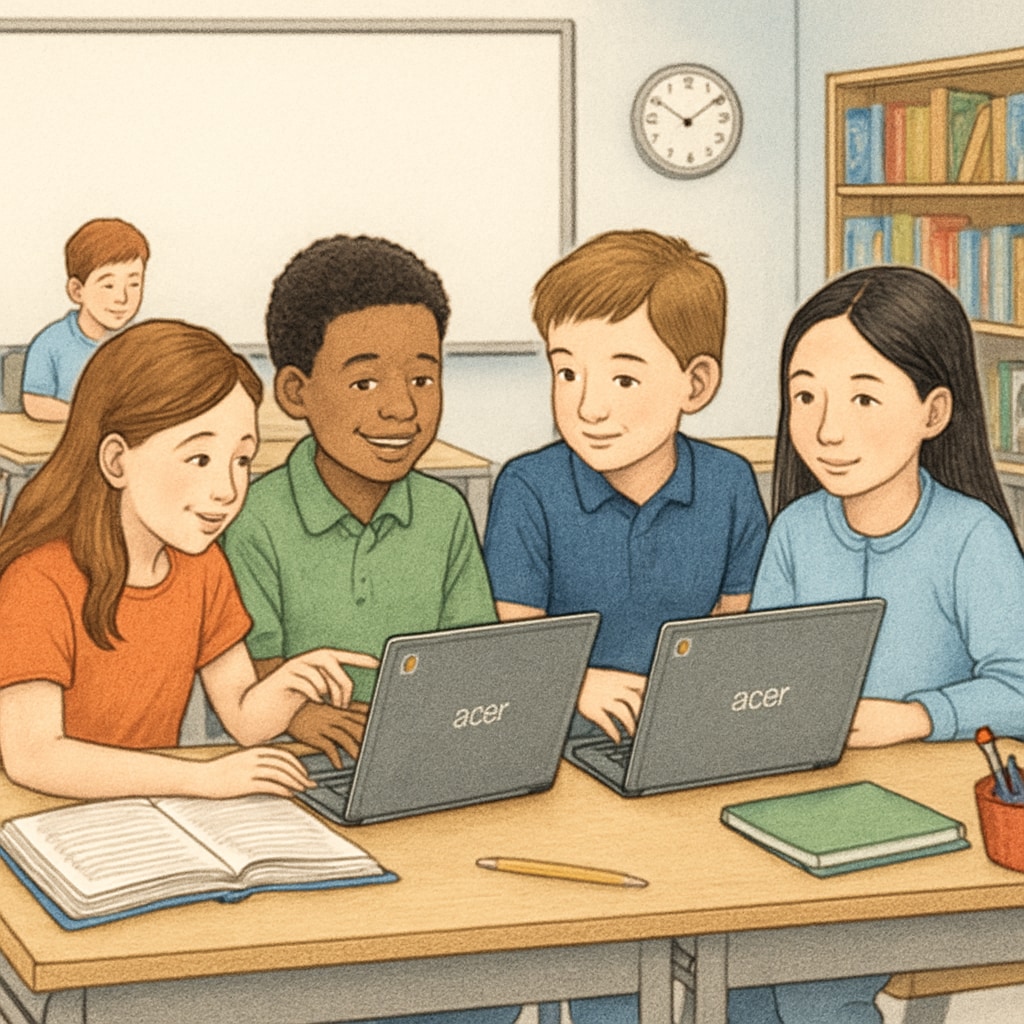In the modern classroom, tools like Chromebooks are at the center of discussions about educational technology, efficiency, and critical thinking. These devices promise faster access to information, personalized learning experiences, and streamlined collaboration. However, many educators and researchers are questioning whether these technological tools truly contribute to the development of deeper cognitive skills, especially critical thinking. Balancing the efficiency of EdTech with the development of students’ intellectual independence is a challenge that educators must navigate carefully.
The Promise of Educational Technology
Educational technology, or EdTech, has revolutionized the way students learn and teachers teach. Devices like Chromebooks allow for instant access to a wealth of information, enabling students to research topics, collaborate on projects, and complete assignments more efficiently than ever before. For example, platforms like Google Classroom provide a centralized system for managing coursework, while interactive applications like Kahoot make learning engaging and interactive.
Moreover, technology can cater to individual learning styles. Adaptive learning software analyzes student performance and adjusts content accordingly, ensuring that each student progresses at their own pace. In addition, EdTech tools often integrate multimedia resources, such as videos and simulations, that can make abstract concepts more concrete and accessible.

However, with this convenience comes the question: Are these tools fostering genuine understanding, or are they merely teaching students to find quick answers?
The Critical Thinking Gap in a Digital Age
Critical thinking—the ability to analyze, evaluate, and synthesize information—is a cornerstone of higher education and lifelong learning. However, the reliance on EdTech tools like Chromebooks could inadvertently discourage deep thinking. For example, the ease of conducting a quick Google search might limit a student’s inclination to question the credibility of sources or explore alternative perspectives.
Additionally, many EdTech platforms prioritize efficiency over exploration. Algorithms often direct students to ‘correct’ answers without encouraging them to consider why those answers are valid—or whether alternative conclusions might exist. This “shortcut culture” could undermine the development of essential cognitive skills, such as reasoning, problem-solving, and the ability to construct well-supported arguments.
In a study conducted by Britannica, researchers found that critical thinking development requires deliberate practice, guided questioning, and opportunities for open-ended exploration—elements that are often sidelined in tech-driven classrooms.
Striking the Right Balance
So, how can educators harness the benefits of EdTech without compromising the development of critical thinking? Achieving this balance requires a deliberate and thoughtful approach:
- Integrate Technology with Traditional Methods: Combine digital tools with hands-on, discussion-based, or Socratic teaching methods to encourage deeper engagement with content.
- Focus on Open-Ended Tasks: Use EdTech platforms to assign projects that require analysis, synthesis, and evaluation, rather than tasks that only test rote memorization.
- Teach Digital Literacy: Help students develop the skills to critically evaluate online sources, question biases in algorithms, and recognize the limitations of technology.
- Encourage Reflection: Incorporate activities that prompt students to reflect on their learning processes, challenging them to think about how and why they reached certain conclusions.
Educators can also leverage technology to model critical thinking. For instance, live demonstrations of how to evaluate a website or analyze a dataset can provide students with practical, transferable skills.

The Future of Learning: Efficiency Meets Depth
Ultimately, the goal of education is not just to impart knowledge but to cultivate independent thinkers who can navigate an increasingly complex world. While EdTech tools like Chromebooks are undeniably powerful, they must be used as part of a broader strategy that prioritizes both efficiency and intellectual growth.
As a result, educators, policymakers, and technology developers must work together to design systems that encourage—not replace—critical thinking. By combining the best of both worlds, we can ensure that future generations are not only tech-savvy but also capable of thoughtful, informed decision-making.
In conclusion, the integration of educational technology into classrooms is not inherently at odds with the development of critical thinking. However, it requires intentionality, balance, and a commitment to maintaining the core mission of education: to empower students to think deeply and critically about the world around them.


